How to track the source of leads & bookings in Zoho Bookings
Find out how to see exactly where your leads and bookings in Zoho Bookings are coming from, so you can easily tell which marketing efforts are bringing in results and which ones might need a rethink.
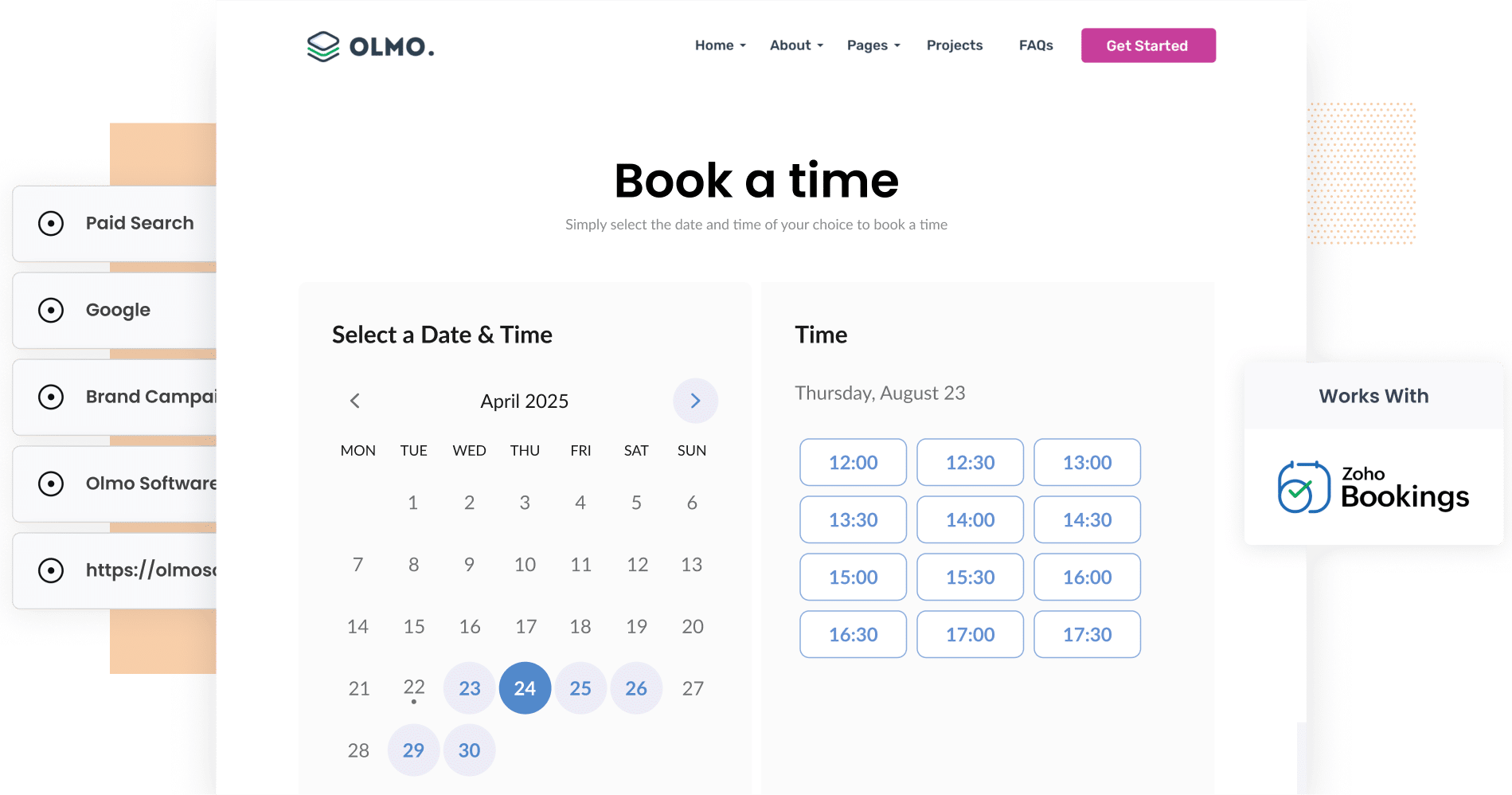
Ever wondered which of your marketing efforts are actually bringing in meeting bookings, leads and customers?
You are not the only one. Tools like Google Analytics can show how many people visited your site and where they came from, but they often fall short when it comes to showing which of those visitors turned into real leads or paying customers.
The good news is there is a much easier way to track it.
In this guide, we will show you how to use a tool called Attributer to record the source of every booking made through your Zoho Bookings widget, whether it is from Paid Search, Paid Social, Organic Search or any other channel.
You will also learn how to send this data into your CRM or reporting tools so you can run reports that show which campaigns, ads, keywords, etc. are generating the most leads and customers for your business.
3 simple steps to track the source of leads in Zoho Bookings
Attributer makes it simple to see where your leads and bookings in Zoho Bookings are coming from. Here is a quick look at how it works:
1. Install Attributer and configure your YouCanBookMe widgets
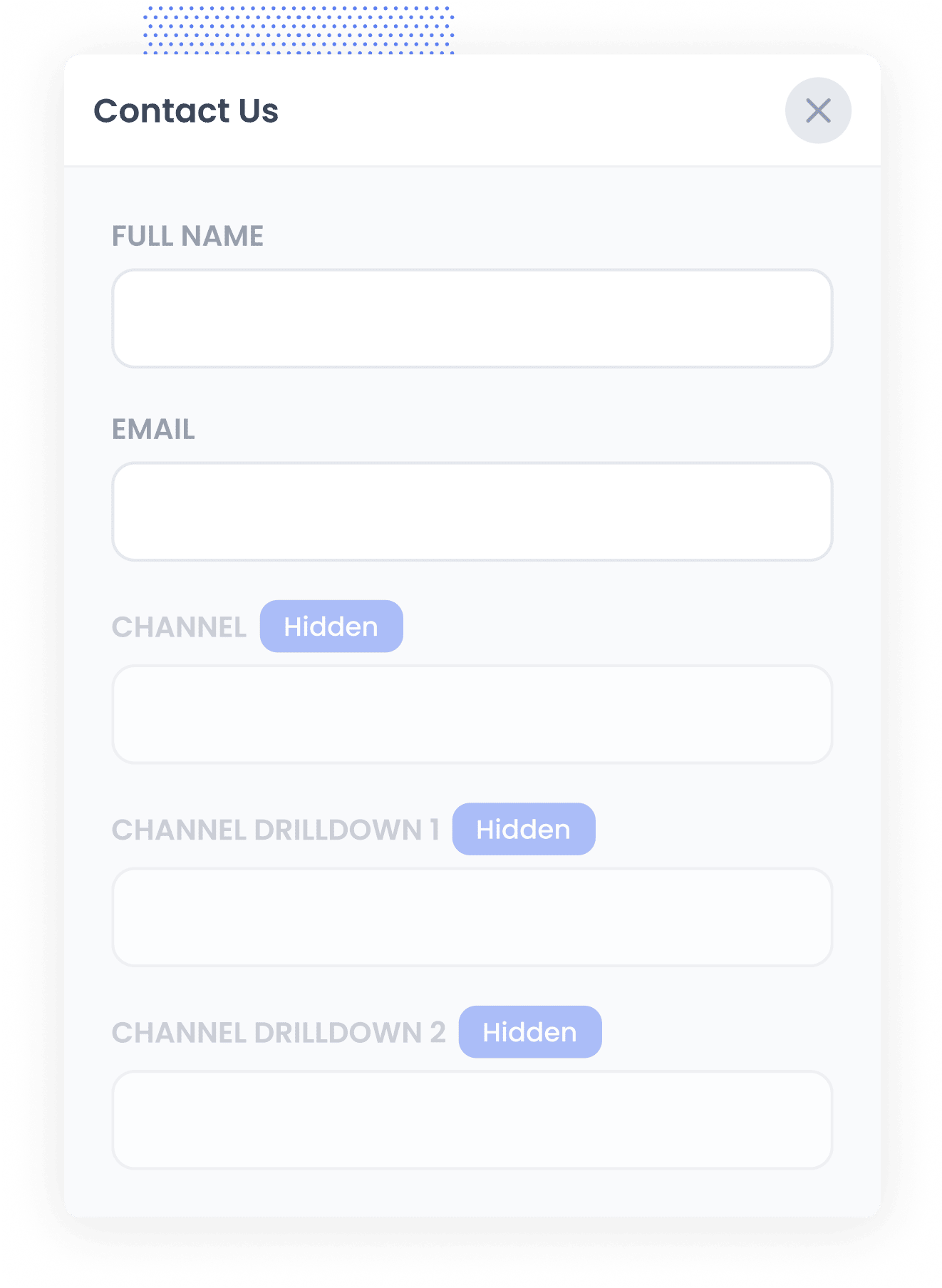
Start by signing up for a free 14-day trial of Attributer. After that, you will get a small piece of code that you need to add to your website (if you need a hand, we have detailed guides for all the popular website builders including WordPress, Squarespace, Webflow, Wix, etc.)
Next, you will set up your Zoho Bookings widget to work with Attributer.
Begin by adding a few hidden fields to your form, such as Channel, Channel Drilldown 1, Channel Drilldown 2, and so on.
Then you just need to copy and paste an additional bit of code onto the page where the Zoho Bookings widget is embedded. You can see full instructions here.
2. Attributer writes the lead source data into the hidden fields
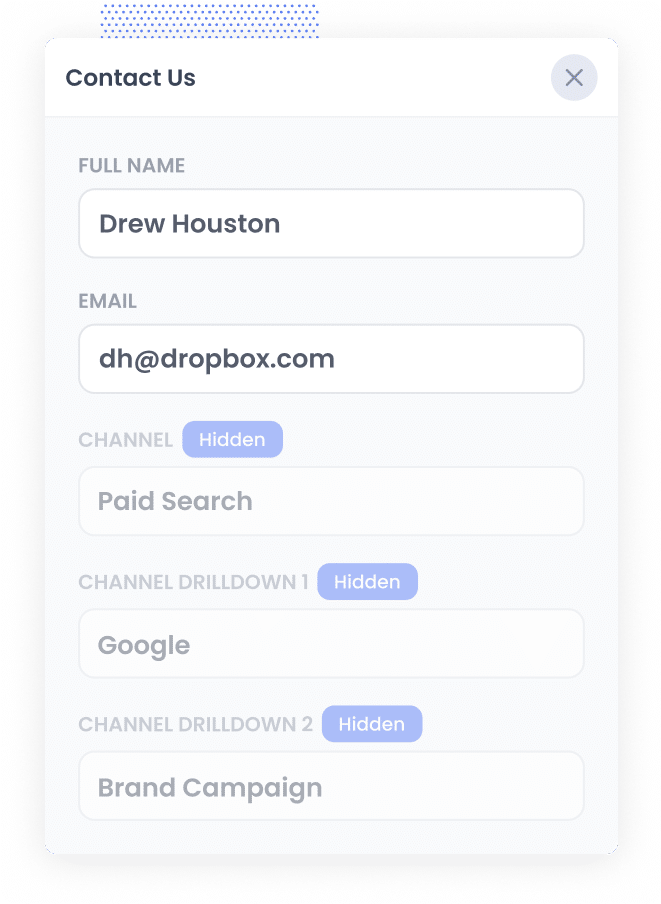
Once everything is set up, Attributer starts working quietly in the background.
Every time someone visits your website, Attributer looks at a range of technical information such as UTM parameters, referrers, device types and more. It uses this data to figure out where that visitor originally came from, much like how Google Analytics works.
It then categorises visitors into marketing channels like Paid Search, Paid Social, Organic Search, Referral and others, and saves this information in the visitor’s browser.
Finally, when that person books a time through your Zoho Bookings widget, Attributer writes the lead source data into the hidden fields you added earlier and it is captured with the booking.
3. Lead source data is captured in YouCanBookMe
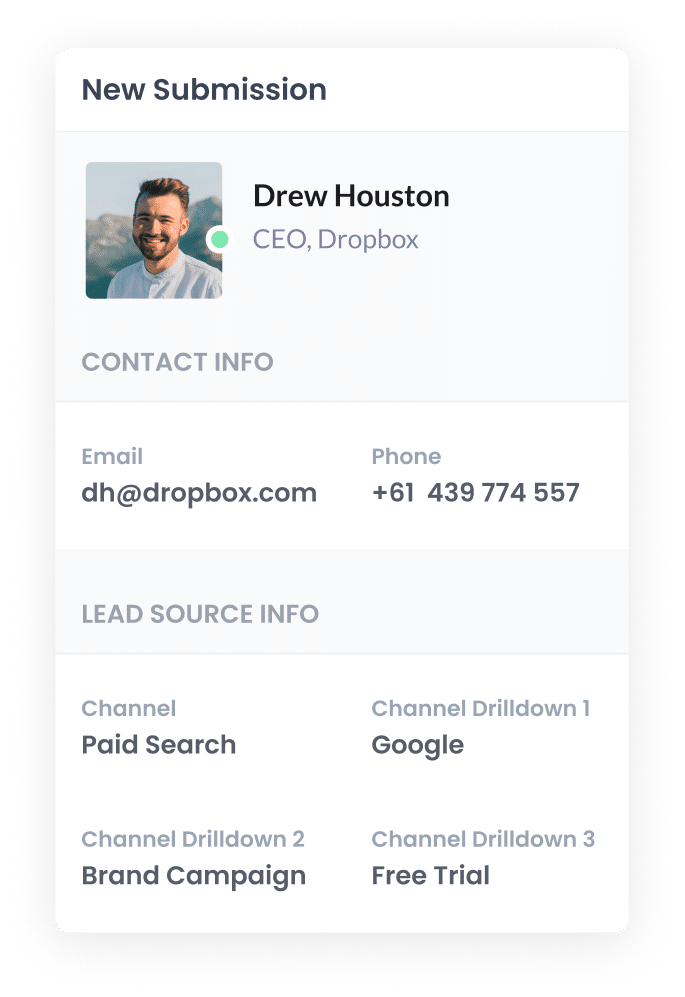
Finally, once the data is captured in Zoho Bookings, you can start using it in a variety of useful ways.
- View it directly in Zoho Bookings - The attribution information appears right next to each booking inside your account, making it easy to see exactly where every lead or booking came from.
- Send it to your CRM - Send it to CRM tools like Zoho CRM and use the data to create reports and dashboards that show which channels and campaigns are bringing in leads and customers.
- Export it to a spreadsheet - Use a tool like Zapier to send the data to Google Sheets, Zoho Sheets or Excel. From there, you can filter and analyse it in the spreadsheet or connect it to platforms like Looker Studio (previously Google Data Studio) or Zoho Reports to build charts and dashboards for your business.
What data gets captured in Zoho Bookings?
Attributer passes through key bits of information about how a lead originally found your website.
To illustrate, imagine you are on the marketing team at Finlytics Advisory, a cloud-based accounting firm. You are running Google Ads to promote your virtual CFO services, and someone clicks one of your ads before booking a consultation through the embedded Zoho Bookings widget on your site.
In this case, Attributer would collect and pass the following information with the booking, based on the UTM parameters from your ads:
- Channel: Paid Search
- Channel Drilldown 1: Google
- Channel Drilldown 2: Virtual CFO Campaign (or the campaign name)
- Channel Drilldown 3: outsourced cfo services (or the keyword searched)
Now imagine another visitor finds your site by searching on Google and lands on your blog post about tax strategies for startups. They also go on to book a meeting through your Zoho Bookings widget.
In that situation, Attributer would capture something like:
- Channel: Organic Search
- Channel Drilldown 1: Google
- Channel Drilldown 2: www.google.com (or their search domain)
- Channel Drilldown 3: startup tax tips (or the search term)
This information is then stored in Zoho Bookings and can be sent to your CRM or a spreadsheet, giving you a clear picture of exactly where your leads are coming from.
3 example reports you can run when you track the source of your leads in Zoho Bookings
When you use Attributer to collect lead source data and send it into your CRM or reporting tools, you're able to build reports that show which of your marketing efforts are actually working and which ones might need a rethink.
Over my 15 years in marketing, I have managed millions in ad spend and created countless reports to get a true picture of return on investment.
Here are three of the reports I have found most valuable over the years.
1. Leads by channel
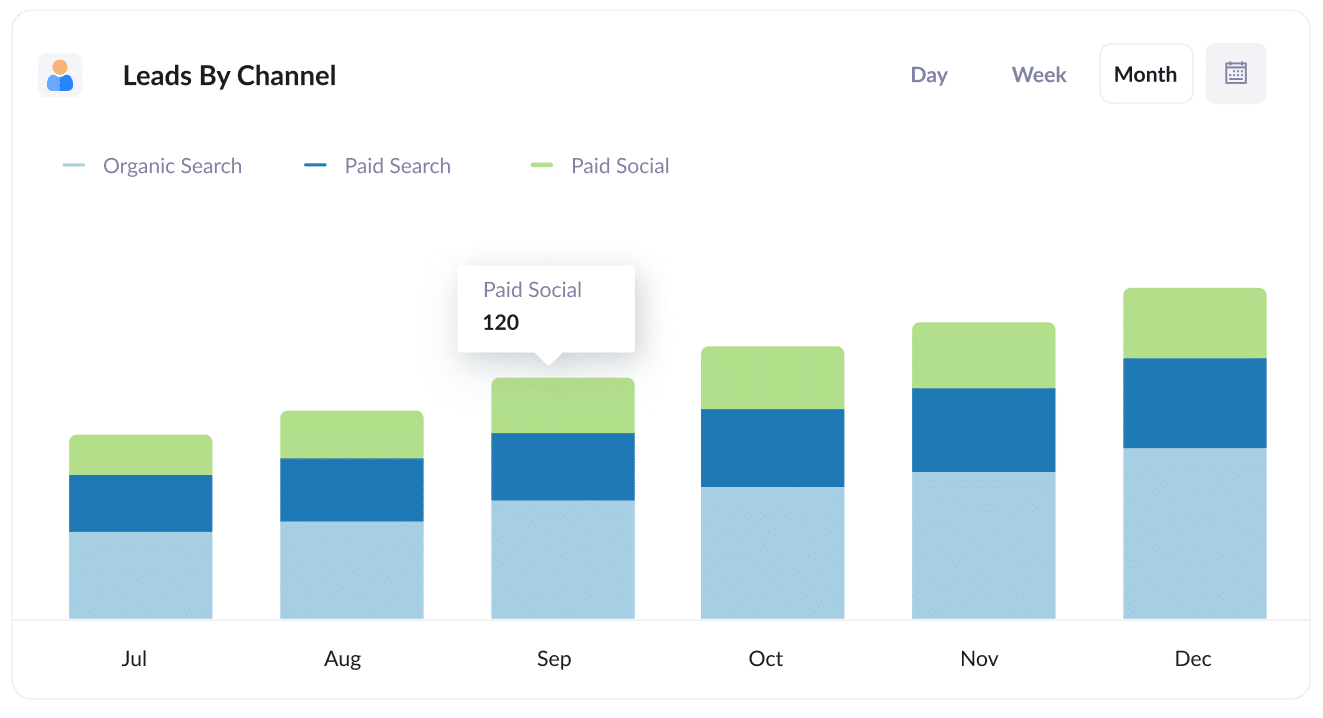
This report shows you exactly how many leads or bookings you are getting each month from each channel, whether that is Paid Search, Organic Search, Paid Social or something else.
It’s a great way to identify which channels are delivering the most leads for your business. And with this insight, you can reallocate your budget and efforts toward what’s working best.
For instance, if Organic Search is bringing in most of your leads but you are spending the bulk of your budget on Paid Social, it might be worth shifting your investment and putting more energy into SEO.
2. Leads by Google Ads campaign
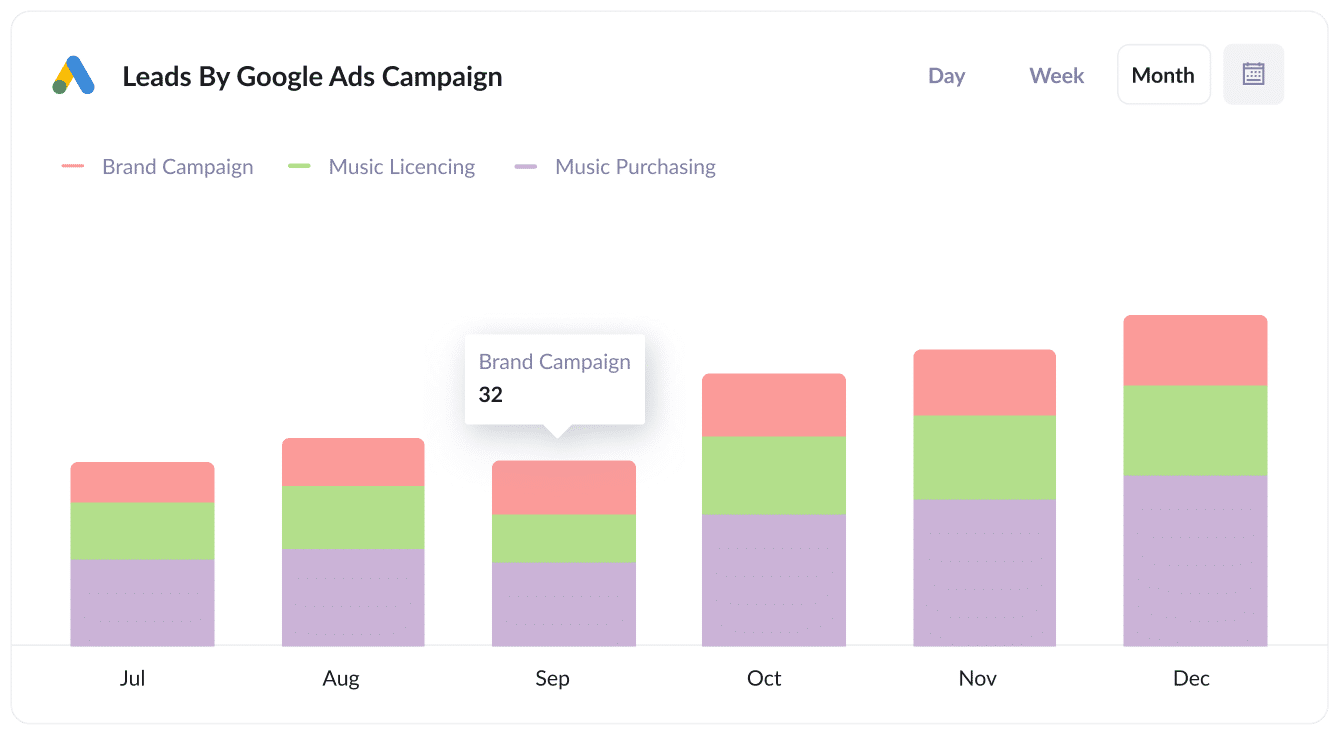
This chart gives you an easy way to see how your Google Ads campaigns are really doing each month (by showing how many leads or bookings each one brings in).
Rather than just focusing on clicks or impressions, it helps you spot which campaigns are actually generating real leads for your business.
Once you know that, you can put more budget behind the campaigns that are working and take a break from the ones that are not.
3. Leads by social network
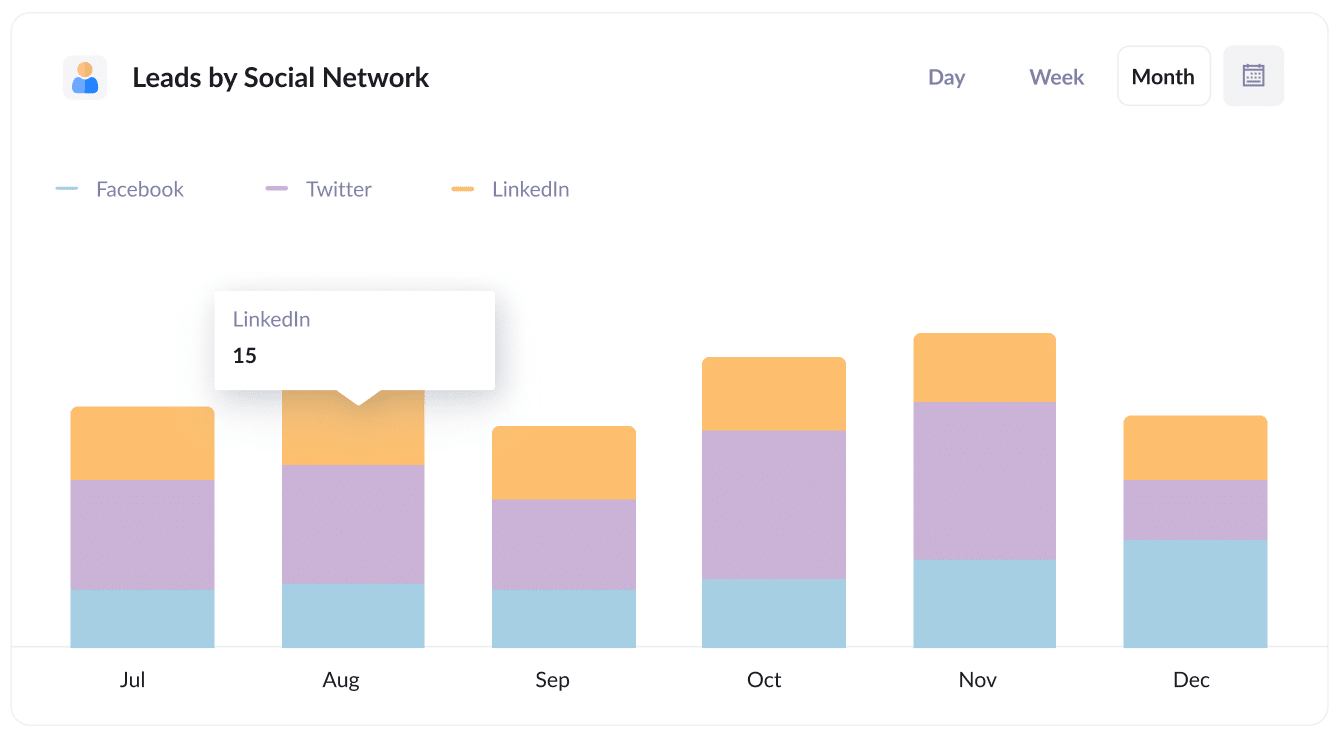
If you are posting on a few different social platforms like Twitter, Facebook and LinkedIn, it is super helpful to know which ones are actually bringing in leads.
This report lays it all out for you, showing a simple side-by-side view of how each platform is performing.
With that info, you can spend more time on the platforms that are working and worry less about the ones that are not delivering much.
Wrap up
If you want a clearer picture of where your leads and customers are really coming from, Attributer might be just what you are looking for.
It tracks where your website visitors are coming from (I.e. Paid Search, Paid Social, Organic Search, etc) and then passes that information (and more) through with each booking that is made through your website.
And if you send that data to your CRM or another reporting tool (like Zoho Analytics), you can build reports that show which of your marketing efforts are bringing in real results.
Attributer is free to try and only takes about 10 minutes to set up. So start your 14-day trial today and see how much easier it is to understand what is working in your marketing.
Get Started For Free
Start your 14-day free trial of Attributer today!

About the Author
Aaron Beashel is the founder of Attributer and has over 15 years of experience in marketing & analytics. He is a recognized expert in the subject and has written articles for leading websites such as Hubspot, Zapier, Search Engine Journal, Buffer, Unbounce & more. Learn more about Aaron here.
